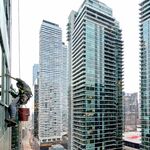I think the "T" will be slowly finding itself to most rapid transit facilities in the GTHA.
The T works well (but maybe not the best) in creating a standard symbol for rapid transit for the entire region short of having an existing brand (such as the TTC) becoming a region-wide indicator for rapid transit lines (which I honestly wouldn't mind either). The wayfinding guide's inclusion of numerical route lozenges (originally developed by the TTC) for rapid transit lines under development such as the Hurontario Line lends the idea that rapid transit lines in the GTHA will probably be eventually branded similarly (with the T and operator logos below) and that emphasis on maps will shift from Toronto-centric to regional rapid transit with the T symbol becoming a standardised symbol for all rapid transit.
Curious to see though is how the TTC will integrate Metrolinx's wayfinding guidelines within their existing wayfinding guide from 2013. Relatively new TTC logo pylons representing rapid transit would have to be replaced if they decide to (or are forced to) embrace Metrolinx's wayfinding guide. Also curious is why brand new transit facilities such as the new Kipling regional bus terminal aren't using the latest wayfinding guidelines either (guess they weren't implemented in time!).
Except...
Metrolinx seems to be using the T not to represent rapid transit, but just wants to plaster it everywhere. The T appears on new GO bus stops, and now on ECLRT.
This document
http://www.metrolinx.com/en/greaterregion/projects/docs/wayfinding/MX_Wayfinding-FactSheet_Jan24.pdf says: "the ‘T’ was selected as the network identifier symbol in Wayfinding Standard and will be gradually implemented throughout the region"
So it seems ML wants to put this on all transit in the region.
According to ML, the T is supposed to just mean "transit"
https://blog.metrolinx.com/2020/02/...ansit-wayfinding-identifier-hits-the-streets/
Who knows how much money and time they wasted on consultants and meetings to come up with this lame "T", but IMO this is totally useless and conveys just about no useful information. It gives no information whatsoever about the mode of transit, the level of service, the quality of service, the fares,
nothing useful.
Saying "hey, there is transit here" is not useful information. I think it's pretty obvious that there is transit when I see a bus stop or subway station. A bus or train icon also conveys the presence of transit, but conveys a mode too. A number in a circle can convey the presence of transit, the mode, and the route.
Now with these dumb T things we need to put a T and a bus icon on a bus stop, 2x the number of icons. It's stupid.
And the funny thing is, on Metrolinx's wayfinding fact sheet (first link above), they state that they specifically did not wanted an icon that did not convey mode, yet they cite a bunch of international examples, almost all of them are icons that convey mode. Why are we citing international examples if we are choosing to do something wholly different?




